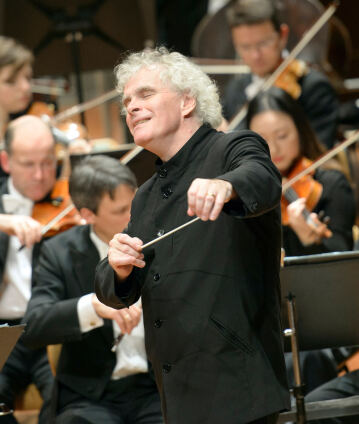Interview
Sir Simon Rattle à propos du cycle Schumann/Brahms Premier concert du cycle Brahms/Schumann avec Simon Rattle

Les cycles symphoniques Brahms et Schumann des Berliner Philharmoniker comptent parmi les évènements majeurs de l’ère Simon Rattle. Ici, l’orchestre et son chef présentent les symphonies des deux compositeurs côte à côte. Ce double portrait fascinant débute par un concert consacré aux premières-nées de Brahms et Schumann.
Berliner Philharmoniker
Sir Simon Rattle
© 2014 Berlin Phil Media GmbH
Interviews liées au concert
Artistes
Nos suggestions
- Simon Rattle dirige les « Tableaux d’une exposition » au Concert de la Saint-Sylvestre 2007
- Simon Rattle dirige la Neuvième de Mahler à Taiwan
- Simon Rattle et Yefim Bronfman
- Ouverture de la saison 2011 : Simon Rattle dirige la Septième de Mahler
- « Carmen » avec Simon Rattle, Magdalena Kožená et Jonas Kaufmann
- Les tubes de Paul Whiteman avec Simon Rattle et Max Raabe